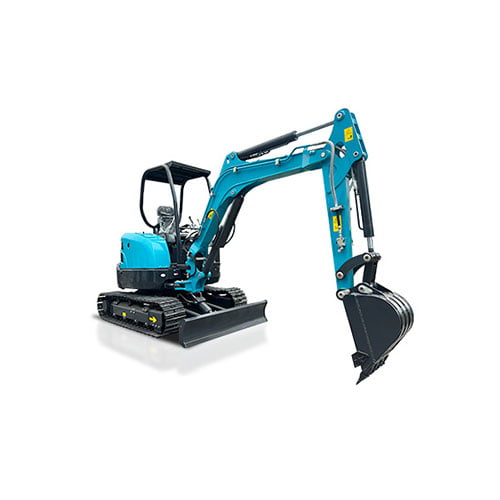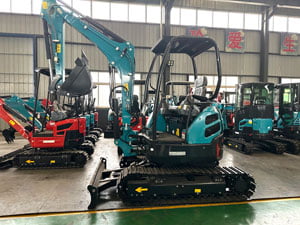Welkom op mijn blog!
Voordat we in de inhoud duiken, zou ik het leuk vinden als je me volgt op mijn sociale mediaplatforms waar ik meer inzichten deel, in contact kom met de community en updates plaats. Dit is hoe je met mij in contact kunt komen:
Facebook: https://www.facebook.com/profile.php?id=100072217509763
LinkedIn: https://www.linkedin.com/company/74949059/admin/dashboard/
YouTube:www.youtube.com/@tractormanufacturer-lc5qz,www.youtube.com/@excavatormanufacturers-sn9hk
TikTok: www.tiktok.com/@tractontwikkelaar, www.tiktok.com/@graafmachinefabrikanten
Now, let’s get started on our journey together. I hope you find the content here insightful, engaging, and valuable.
Inhoudsopgave
Inleiding


A mini graafmachine seat plays a crucial role in ensuring operator comfort, efficiency, and safety. However, many excavator owners and operators overlook common issues related to the seat, leading to unnecessary costs, reduced productivity, and even health concerns. By identifying and avoiding these problems, you can extend the lifespan of your seat, improve working conditions, and save money on repairs and replacements. This guide explores seven critical issues you should be aware of and how to address them effectively.
NO 1. Poor Cushioning Leading to Discomfort
One of the most common and troublesome issues with mini excavator seats is inadequate cushioning. Excavator operators spend long hours seated in the machine, often in challenging conditions. If the seat lacks proper padding or support, it can lead to significant discomfort, back pain, and fatigue, which in turn reduces operator efficiency and productivity. Over time, this discomfort can even cause long-term health issues, such as poor posture, muscle strain, and chronic pain, making it imperative to choose a seat that prioritizes comfort and ergonomic design.
When the seat’s cushioning is not adequate, the operator may have to shift positions frequently to find a more comfortable posture, which can interrupt their workflow and reduce focus. In addition, hard, poorly padded seats do not absorb vibrations effectively, contributing to increased physical strain. This can have a detrimental effect on the overall performance of the operator and ultimately lead to reduced output and longer recovery times.
How to Avoid This Issue:
- Choose a Seat with High-Density Foam Cushioning: High-density foam provides superior support by evenly distributing weight across the seat. This type of padding helps reduce pressure points, ensuring better comfort during extended periods of use.
- Regularly Inspect and Replace Worn-Out Cushions: Cushions, even the best ones, will degrade over time. Prolonged use can lead to flattened padding, reducing its effectiveness. Regularly inspecting and replacing worn-out cushions ensures that you always have optimal comfort and support.
- Use an Ergonomic Seat Cover for Added Support: Adding an ergonomic seat cover can provide additional padding and lumbar support, especially in seats that are not as well-cushioned as they could be. These covers are designed to improve comfort and enhance posture, helping reduce the risk of back pain and other discomforts associated with long hours of operation.
- Consider Adjustable Seats: Adjustable seats, whether they feature lumbar support, seat height, or tilt adjustments, offer greater flexibility for operators. This allows them to find the optimal seating position for maximum comfort and reduce strain on the body.
By investing in a seat with proper cushioning and taking steps to maintain it, operators can prevent discomfort, improve their focus and performance, and promote long-term health while using mini excavators.
NO 2. Lack of Suspension System
A mini graafmachine seat without a proper suspension system can cause excessive vibrations and jolts, leading to operator fatigue and long-term health issues such as lower back pain.
How to Avoid This Issue:
- Opt for a seat with an advanced suspension system.
- Regularly check and maintain the suspension components.
- Adjust the suspension settings according to operator weight and terrain conditions.
NO 3. Non-Adjustable Seat Positions


A fixed or non-adjustable mini graafmachine seat can significantly hinder an operator’s ability to find a comfortable and effective seating position. Not every operator has the same body type, height, or posture preferences, and when the seat lacks adjustment capabilities, it forces all operators to work with a one-size-fits-all solution. This can lead to discomfort, strain on the back, legs, and neck, and even reduce overall control and efficiency during operation.
When an operator is unable to adjust the seat to fit their specific needs, they may have to contort their body into awkward positions, which can affect their range of movement, reaction time, and ability to properly control the excavator. Additionally, improper seating can cause fatigue and muscle strain, making it harder to stay focused or maintain a steady hand on the controls, which increases the risk of operator error and potential accidents. For longer shifts, the lack of adjustability can result in more frequent breaks and lower productivity.
How to Avoid This Issue:
- Invest in a Seat with Multiple Adjustment Options: The best way to avoid discomfort and control issues caused by a fixed seat is to invest in a mini excavator seat with a range of adjustment options. These seats should allow for modifications in seat height, backrest angle, lumbar support, and even seat depth. These features help operators find a comfortable, customized seating position, reducing the risk of strain and improving overall control. The more adjustable the seat, the better suited it will be for different operators, especially in machines that may have multiple users with varying body types. Ideally, the seat should also feature adjustable armrests, which contribute to reducing upper body strain and enhancing operator comfort during extended periods of use.
- Train Operators on Proper Seat Adjustment Techniques: Even the best adjustable seats won’t be effective if operators don’t know how to adjust them properly. Training your operators on how to adjust the seat for their specific needs is essential to ensure that they get the maximum benefit. Operators should be instructed to adjust the seat height so that their feet are flat on the floor and their knees are at a comfortable angle. The backrest should be positioned to provide adequate lower back support, and the seat depth should allow for proper blood circulation in the legs. Additionally, it’s crucial to encourage operators to adjust the seat periodically during their shifts to alleviate any pressure or discomfort that may build up over time.
- Inspect Adjustment Mechanisms Regularly to Ensure Smooth Functionality: Over time, the adjustment mechanisms of seats can wear out, become stiff, or even break down. When this happens, the seat may become difficult to adjust, rendering it ineffective for the operator. To prevent this, regular inspection and maintenance of the seat’s adjustment mechanisms are crucial. Ensure that moving parts such as levers, knobs, and slides are lubricated and free of debris. Tighten any loose bolts or connections, and replace any worn-out components promptly. Regular maintenance not only ensures that the seat can be adjusted easily but also extends the lifespan of the seat, making it a worthwhile investment for years to come.
NO 4. Poor-Quality Seat Material
Seats made of low-quality materials wear out quickly, leading to cracks, tears, and discomfort. This can also affect the resale value of the equipment.
How to Avoid This Issue:
- Select a seat with durable, weather-resistant materials.
- Clean and maintain the seat regularly to prevent damage.
- Use protective covers to extend the lifespan of the seat.
NO 5. Faulty Seatbelt Mechanism
A malfunctioning seatbelt in a mini graafmachine seat can pose serious safety risks, increasing the chances of injury in case of sudden stops or rollovers.
How to Avoid This Issue:
- Regularly inspect the seatbelt for signs of wear and tear.
- Replace faulty seatbelts immediately.
- Ensure the seatbelt is properly fastened before operation.
NO 6. Exposure to Harsh Weather Conditions
Extended exposure to sunlight, rain, and dust can degrade the quality of a mini graafmachine seat, causing fading, cracking, and reduced durability.
How to Avoid This Issue:
- Store the mini excavator in a covered area when not in use.
- Use UV-resistant and waterproof seat covers.
- Clean the seat regularly to remove dirt and debris.
NO 7. Ignoring Regular Maintenance


Lack of regular maintenance can lead to premature wear and tear, making the seat uncomfortable and reducing its overall lifespan.
How to Avoid This Issue:
- Implement a maintenance schedule for inspecting and cleaning the seat.
- Lubricate moving parts to ensure smooth adjustments.
- Repair minor damages before they become severe.
Comparison of Key Features in a Mini Excavator Seat
Below is a table highlighting the key features that differentiate high-quality mini excavator seats from low-quality ones:
| Functie | High-Quality Seat | Low-Quality Seat |
|---|---|---|
| Cushioning | High-density foam | Thin, low-quality padding |
| Suspension System | Advanced suspension | No or basic suspension |
| Adjustability | Multi-position adjustments | Fixed position |
| Material Durability | Weather-resistant fabric | Prone to cracking and tearing |
| Seatbelt Quality | Strong and durable | Weak or missing |
| Onderhoudsbehoeften | Low with proper care | High due to wear and tear |
Conclusie
Avoiding these seven common mini graafmachine seat issues can save you significant costs in the long run while ensuring maximum comfort and efficiency. Investing in a high-quality seat with proper cushioning, adjustability, and durable materials will enhance operator productivity and safety. Regular maintenance and protective measures will further extend the seat’s lifespan, preventing unnecessary expenses.
FAQ
How often should I replace a mini excavator seat?
The lifespan of a mini graafmachine seat depends on usage and maintenance. A well-maintained seat can last several years, but it’s advisable to inspect it regularly and replace it when signs of wear appear.
Can I install a new seat in my mini graafmachine myself?
Ja, veel mini excavator seats are designed for easy installation. However, ensure that the new seat is compatible with your equipment and follow the manufacturer’s guidelines.
What’s the best way to clean a mini graafmachine seat?
Use a mild detergent and a damp cloth to clean the seat. Avoid harsh chemicals that may damage the material. If the seat is fabric-covered, consider using a fabric cleaner.
How can I improve the comfort of my mini graafmachine seat without replacing it?
Adding an ergonomic seat cover, adjusting the seat settings, and using extra cushioning can enhance comfort without requiring a full replacement.
What should I do if my mini graafmachine seat suspension stops working?
Check for any visible damage or loose components. Lubricate the suspension parts and ensure all bolts are tight. If the issue persists, consider replacing the suspension system or the entire seat.




